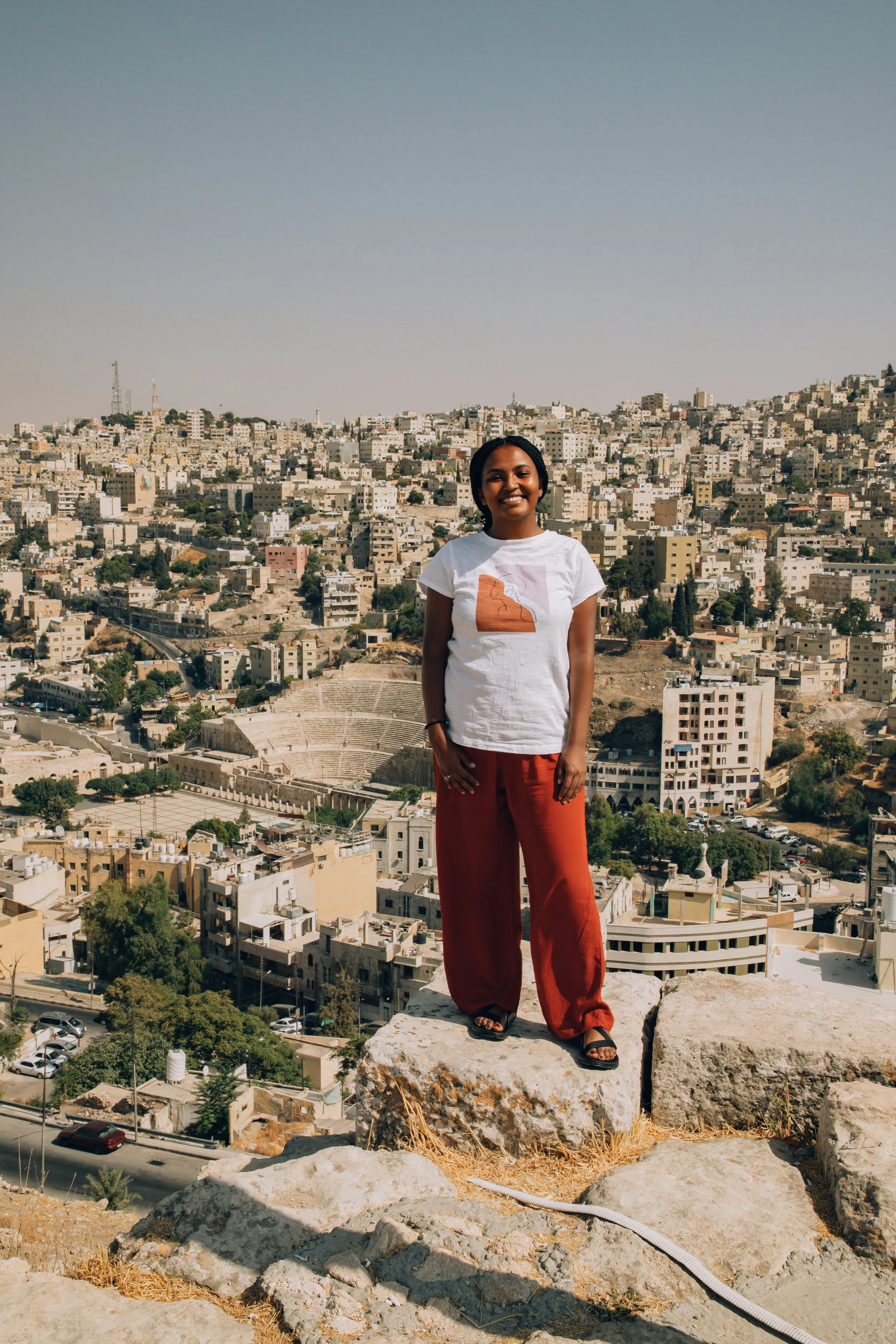"Dancing Over the Skies of Amman" by Elena Patilliet
To the unsuspecting and untrained eye of the common tourist visiting Amman, the dazzling sight of thousands of pigeons swooping and circling the skies of the city in the late afternoon, almost as if performing a ritual dance to usher the evening hours, may seem a natural occurrence; one that is common to many of the largest urban areas around the world. But there is a particularity about the significance of those birds flying over the skies of Amman. In Amman, it is a tradition that dates back to the 1940s when Syrian immigrants brought the first birds into the city. Today, it is a hobby that occupies the time of many families in Amman.
History tells that pigeons started to be part of city life more than 5,000 years ago, when the people of the ancient Middle East civilization of Mesopotamia, brought the birds out of the wilderness and built houses for them. Pigeons are cliff-dwelling birds that love to build their nests in stone, marble, and cement. Today, the pigeons find themselves completely at home in urban environments, nesting in buildings that resemble cliff faces. It is well known that cities around the world take drastic measures to control the pigeon population as these birds contribute largely to the rapid decay of monuments and building facades. In Venice, just to cite an example, tourists will be fined if they feed the pigeons. But in Amman, it is a different story and pigeons have become a tradition.
I came to learn about this Jordanian tradition indirectly. I knew very early in life what I wanted to study in college and part of my plan was to master the Arabic language. Spending a semester in Jordan was part of my college plan even before I graduated high school. Circumstances made that I was not able to travel to Jordan when the moment came, but I still chose to take advantage of the online program. Thanks to the different activities offered by Amideast to the students who, like me, did not have the opportunity to travel abroad, I was able to take a walking tour of the city of Amman under the guidance of a local tour guide named Anas Saamarne. In the late afternoon, Anas took us to the rooftop of one of his friend’s homes; a family that breeds pigeons and competes in the art of making the flocks circle over the skies of Amman every afternoon. There we met his friend, a local pigeon breeder.
The sun had started to melt into the horizon and Anas’ friend was getting ready to lead his pigeons into flight. We could hear the whoosh and the sound of flapping wings as he started to communicate with them. Guided by the familiar whistling of the breeder, the colorful pigeons continuously circled over the city of Amman and back into the rooftop forming tight arcs, and etching short-lived silhouettes against the orange sunset.
Anas explained that breeding pigeons is a hobby for many families in Amman. Families that raise pigeons breed them for competition. Many bring new specimens from all over the world, and some birds can cost more than $1,000 a couple. With this price tag, it is imaginable that problems arise when something as “volatile” as a bird does not return with the flock before nightfall. Anas explained that traditionally, pigeon breeders respect formal rules of etiquette consisting of agreements, negotiations, and truces among the breeders. They act as a guide as to what to do when someone else’s bird ends on the wrong rooftop. Still, some chose to keep the birds and sell them at the “souk”, giving rise, lately, to “wars” among competing groups.
During the last two years, pigeons have brought solace to many of the breeders during the strict lockdowns. As the world slowly opens, children are again allowed in the rooftops to visit and learn about this Jordanian tradition, ensuring its survival.





